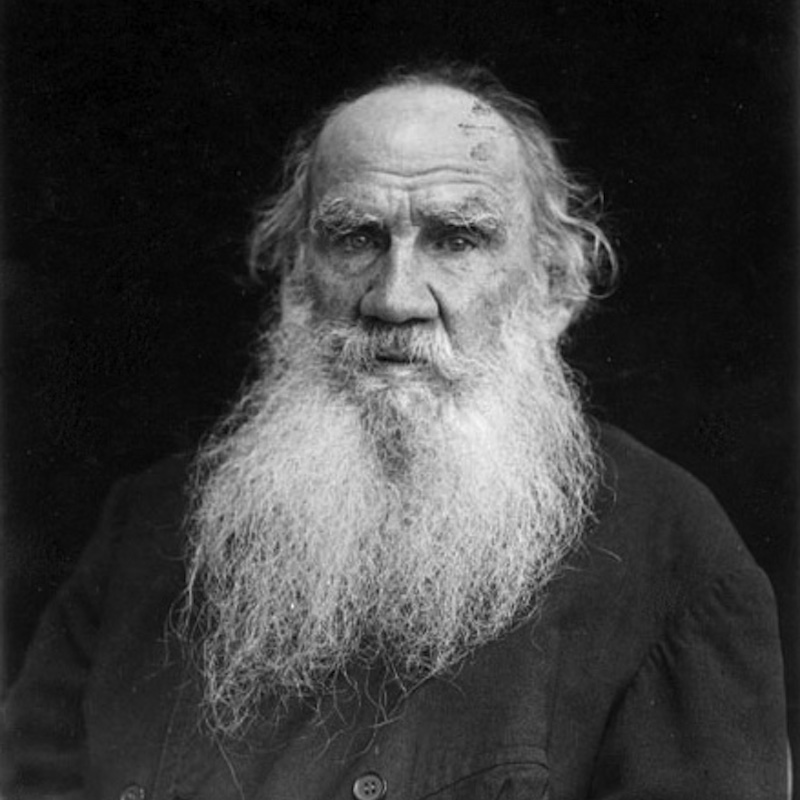Anna Karenina (1878)
Episode #1 of the course Masterpieces of world literature and why they matter by Alisa Miller
Welcome to this course on literary masterpieces and why they matter. I’m Alisa Miller, and together, we will explore ten works of influential world literature, moving from earliest to latest by publication date, and examine how they make a difference in the world. Today, we will start with Anna Karenina, written by Leo Tolstoy.
A Novel in Installments
Leo Tolstoy began writing Anna Karenina as a serial story published in the Russian magazine Russian Messenger in January 1875. The magazine published installments through 1877. The story was subsequently published as a three-volume novel the following year. Tolstoy was known as a naturalist writer. Naturalism was a push against the romantic era, renouncing the subjective, emotional style of romanticism for what was perceived as a more true, objective description of life and humanity. While Anna Karenina certainly embraces elements of naturalism—as seen in its realistic depictions, such as that of childbirth— it also showcases Tolstoy’s desire to stimulate the intellect, which was not always a goal of naturalism.
Illicit Love
Anna Karenina opens with a family crisis resulting from an adulterous relationship in the Oblonsky household between Stiva Oblonsky and the family’s governess. While the household is in complete chaos, Stiva receives word that his sister, Anna, will be visiting them. Additionally, Stiva’s friend, Konstantin Levin, has come to visit with the intention of asking Stiva’s sister-in-law to marry him. On the train to visit Stiva, Anna strikes up a conversation with a countess. Upon arrival, they discover that the countess’s son, Count Vronsky, is an acquaintance of Stiva’s and also pursuing his sister-in-law. Upon meeting Anna at the station, Count Vronsky is smitten with her. In these first 70 or so pages, Tolstoy lays out the complex foundation for the rest of the book.
Anna repairs the damage between the Oblonskys. She goes on to begin an affair with Count Vronsky, despite being married to an influential member of the aristocracy. Anna, a graceful, intelligent, well-respected woman, denounces her unfulfilling life to follow her heart. She eventually gives up the son she had with her husband and her social standing. Anna and Vronsky’s affair is a major focus of the book, but it serves as a point to illustrate the power of society and its tendency to enforce a moral code that is unfairly stacked against women. The affair between Stiva and the governess that opens the book is juxtaposed with the affair between Anna and Vronsky. Stiva keeps his family and his social status, while Anna loses everything.
Pushback against Society
Interestingly, while the book is named for Anna Karenina, many scholars believe Konstantin Levin is actually the protagonist of the novel. This character is modeled after Tolstoy himself, and as Stiva and his ruminations over being caught in his affair open the book, Levin and his thoughts on society and the individual close it. Levin, a landowner, embodies the old, traditional aristocracy, while also exploring the new free thinkers of the era. In the end, Levin successfully acts as a bridge between the old way and the new, offering hope for 19th-century readers.
In Anna Karenina, Tolstoy is striking out against society and its high moral expectations. When Levin explores modern thoughts and actions, he doesn’t lose anything. In fact, his relationship with his wife and child are strengthened and his livelihood and status are intact, which is contrasted with the result of Anna’s modern approach to finding happiness. Tolstoy appears to be asking the reader to examine and question the moral expectations required of society in the face of social change.
In the late 19th century, Russia was poised on the brink of change, which is reflected in much of Anna Karenina. Tolstoy provided readers at that time hope for both social change and acceptance. More importantly, though, and what contributes to the ongoing success of the work is how Tolstoy created deeply rich characters with intricately connected lives. He artfully demonstrated the challenges and privileges of both class and gender, which are still remarkably relevant today.
I hope you enjoyed learning about Anna Karenina and Tolstoy’s statement on society. Tomorrow, we will move from late 19th-century Russia to early 20th-century Czechoslovakia, when we look at Franz Kafka’s Metamorphosis.
Recommended book
Share with friends

